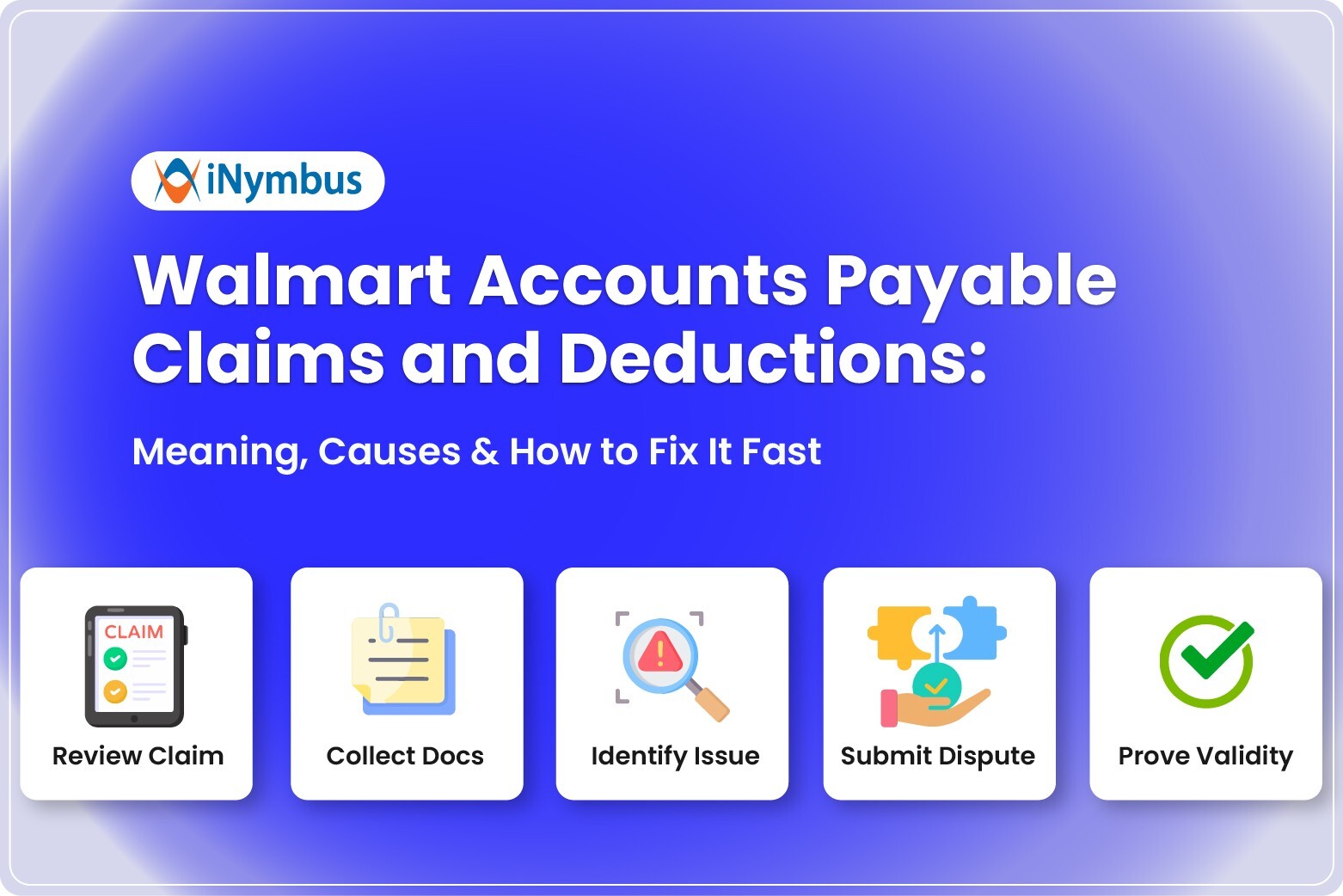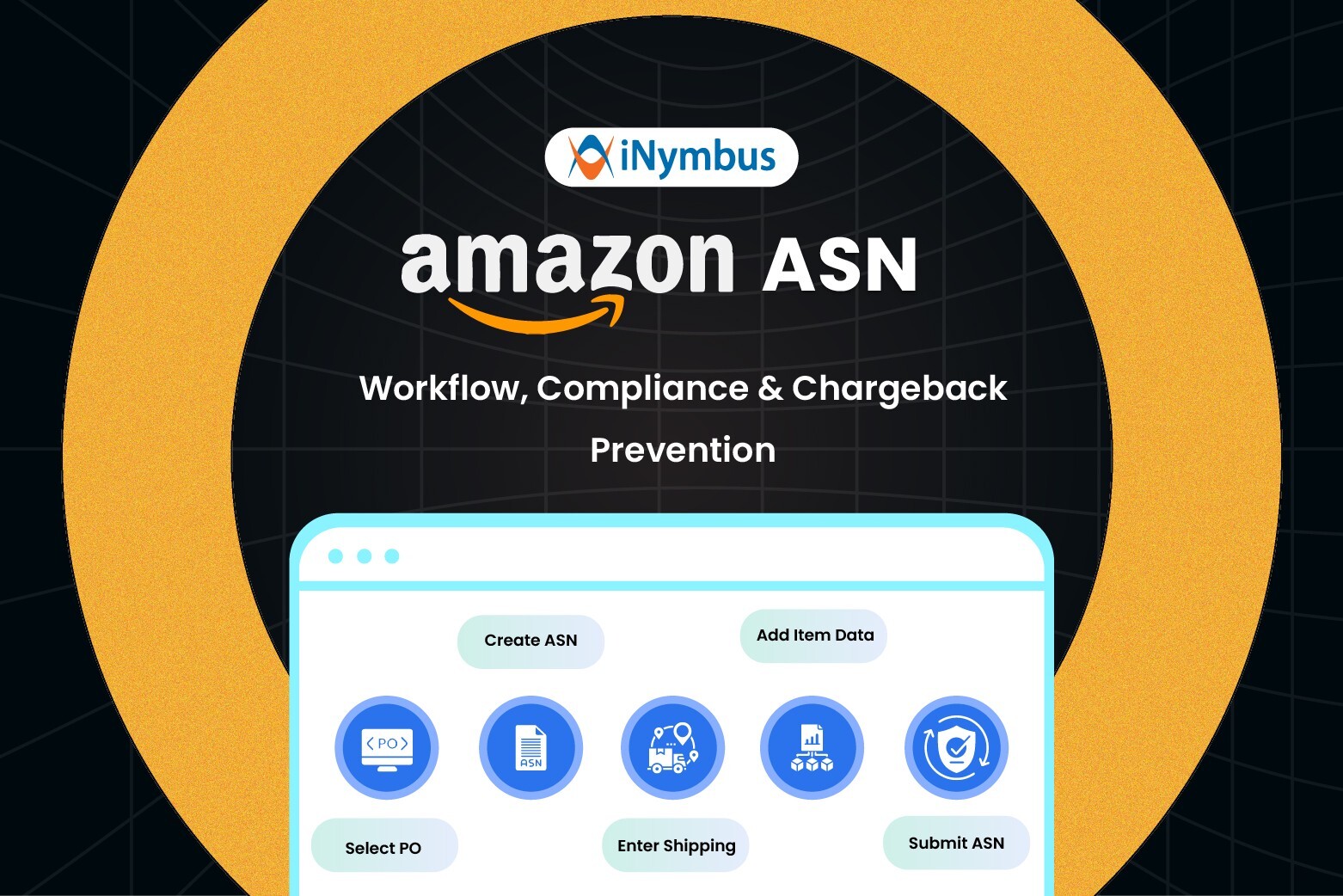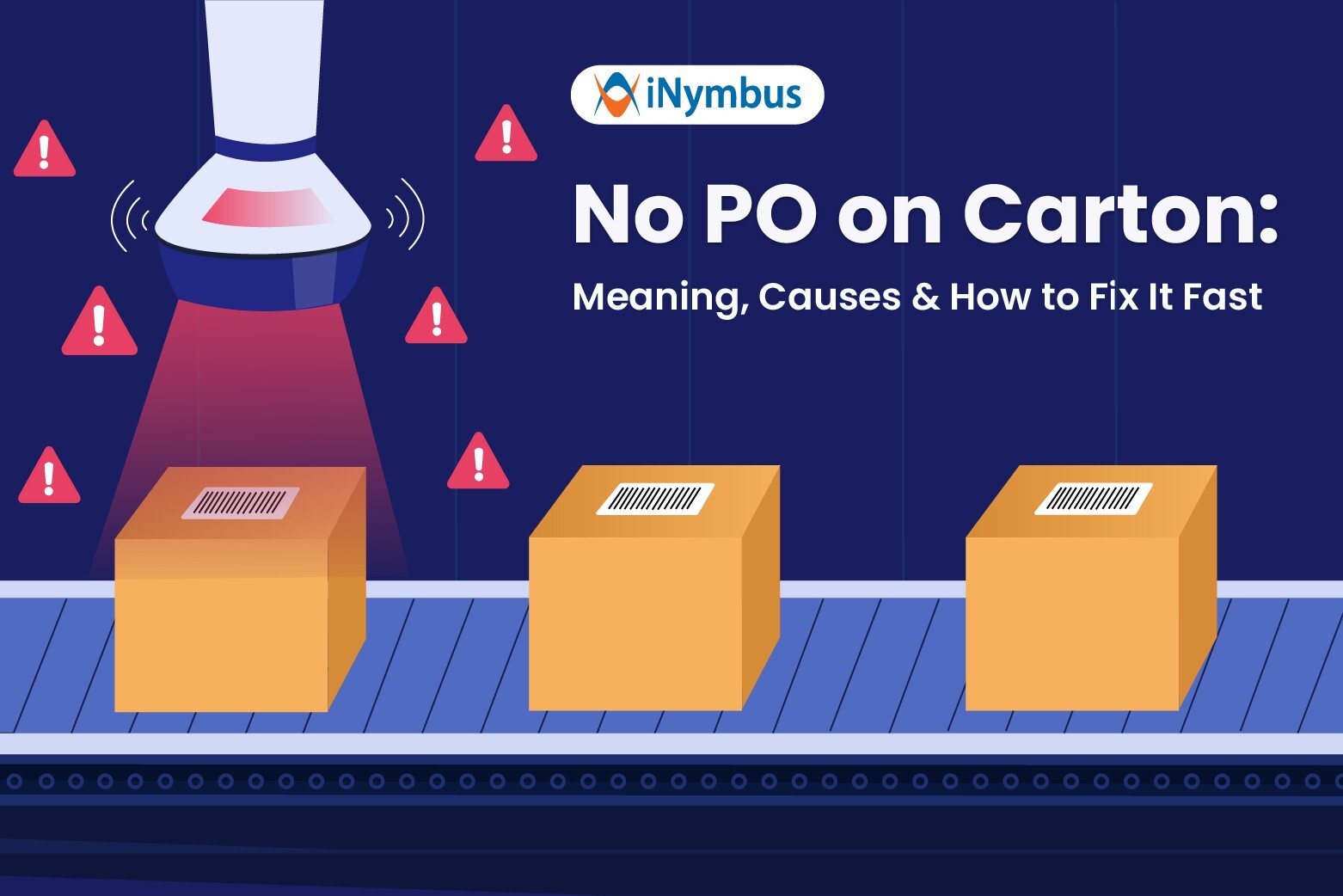Centralized Inventory Management: A Guide for Vendors and Suppliers
 Picture yourself managing supply for multiple retail outlets, like driving on a busy highway. Suddenly, one of your top retailers runs out of stock on a fast-moving product. You rush to respond, arrange an urgent shipment, reallocate inventory, and notify your team. You narrowly avoid stockouts and missed sales.
Picture yourself managing supply for multiple retail outlets, like driving on a busy highway. Suddenly, one of your top retailers runs out of stock on a fast-moving product. You rush to respond, arrange an urgent shipment, reallocate inventory, and notify your team. You narrowly avoid stockouts and missed sales.
But what if you had a system that could warn you before that happened?
That is what centralized inventory management is designed to do.
It acts like a control tower for your entire supply chain. It tracks inventory levels, monitors demand patterns, and helps you respond before problems arise. Instead of reacting under pressure, you make decisions with full visibility and time on your side.
Centralized inventory systems give vendors the insight to plan ahead, reduce overstocks and shortages, and build stronger relationships with retail partners.
In this guide, we will explore what centralized inventory management is, how it works for suppliers, the different models you can use, and how to put a system in place that actually works.
Let's begin.
What Is Centralized Inventory Management?
Centralized inventory management is a supply chain approach where all inventory data, decisions, and control are managed through a single, unified system.
For vendors and suppliers, it means overseeing product availability, stock levels, and order fulfillment for all retail partners from one central point of access. This enables more accurate planning, fewer disruptions, and improved coordination across the supply network.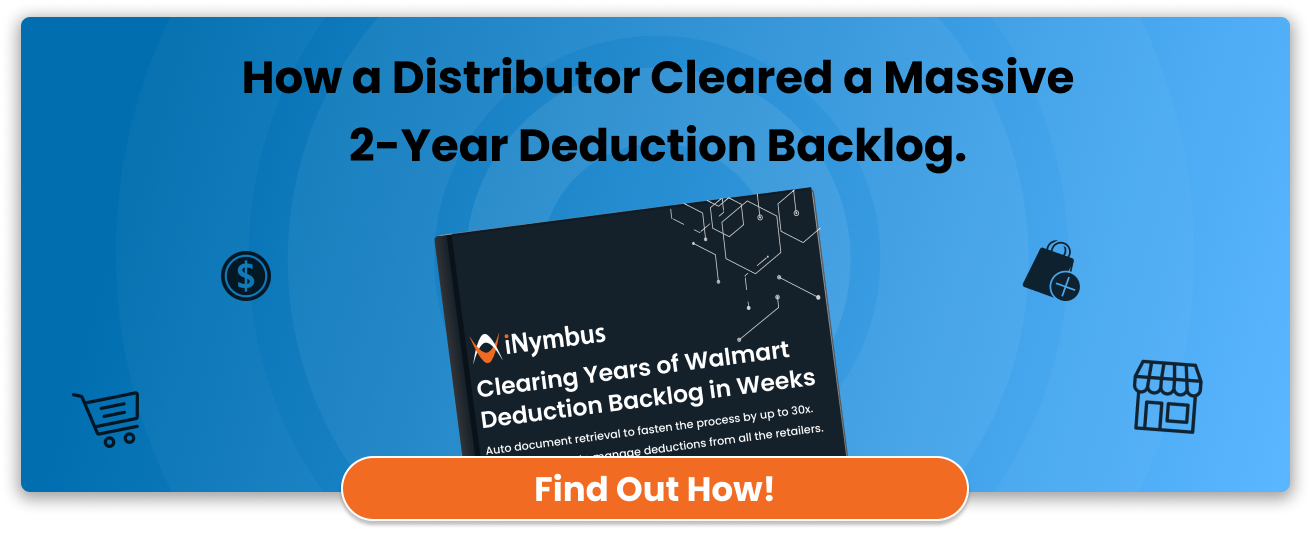
How Does Centralized Inventory Management Differ from Other Models?
Let’s look at how it compares with other inventory structures:
- Decentralized inventory management: In this model, each warehouse, retail location, or partner manages its own inventory independently. Vendors often have limited visibility, making it harder to forecast demand or react to issues across channels.
- Retailer-led inventory control: Retailers dictate stock levels and replenishment, while vendors play a reactive role. Vendors may only respond after receiving purchase orders or low-stock alerts, which limits efficiency and proactive planning.
- Centralized inventory control: The vendor has a unified view of stock across all retail partners, fulfillment centers, and channels. Inventory decisions are coordinated centrally, allowing real-time tracking, consistent stock levels, and faster response to changes in demand.
What Role Do Vendors Play in Centralized Inventory Models?
In centralized models, vendors take an active role in managing inventory across the supply chain. Their responsibilities typically include:
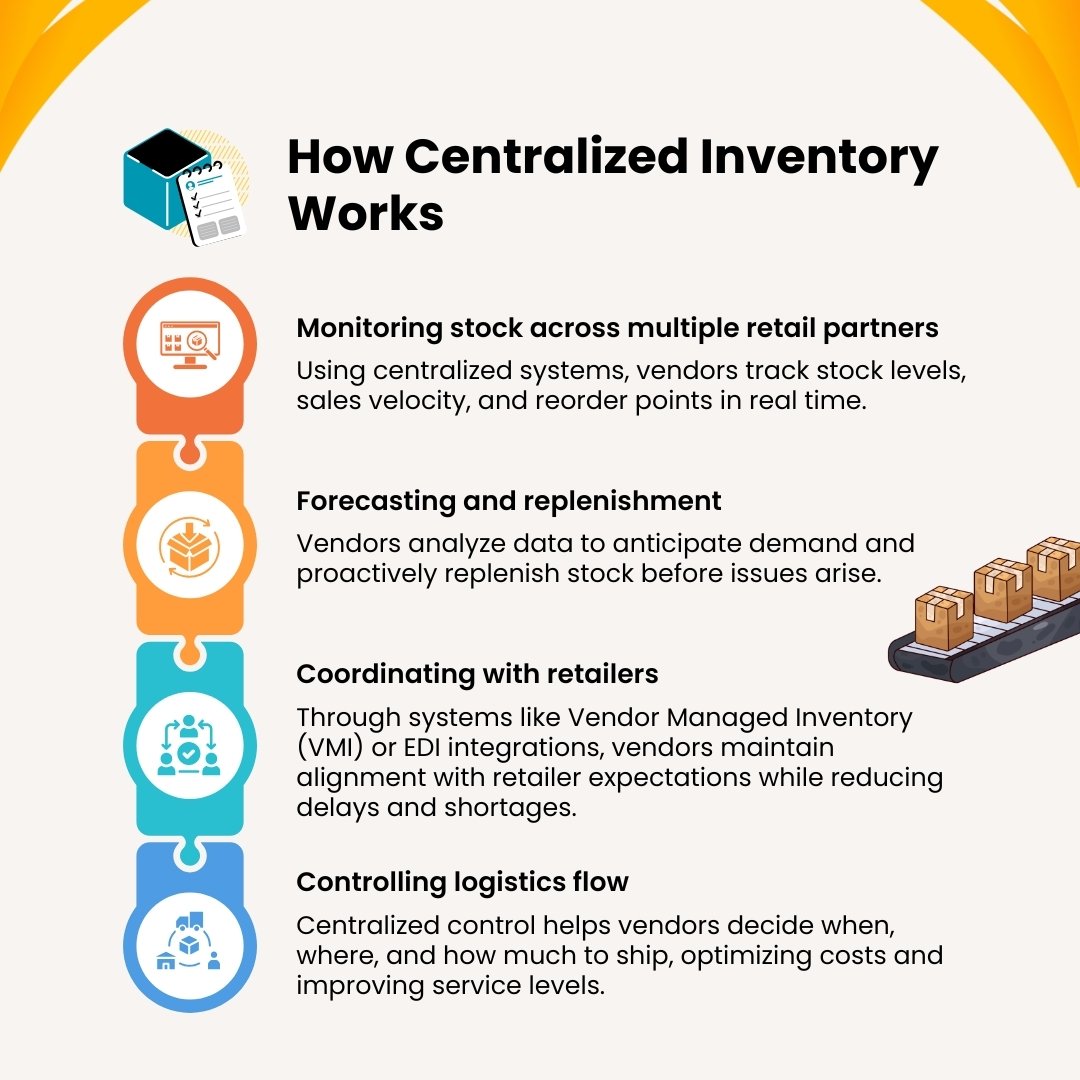
Why Centralized Inventory Matters for Suppliers
Centralized inventory management helps vendors gain better control, visibility, and efficiency across their retail supply chain.
- Full visibility across partners and channels
Centralized systems allow vendors to monitor inventory levels across all warehouses, retail locations, and online channels from a single dashboard. This prevents overstocking in one location and stockouts in another. - Faster, data-driven decision-making
With unified inventory data, vendors can make accurate decisions based on actual demand, seasonal trends, or sales velocity. - Fewer stockouts and missed sales
By detecting low-stock situations early and managing safety stock centrally, vendors can prevent product unavailability at the point of sale. - Lower carrying costs and reduced waste
Centralized visibility helps balance inventory loads, reduce excess stock, and avoid product spoilage or obsolescence, especially for perishable or high-turnover items. - Improved forecasting and planning
Centralized systems combine historical sales, seasonal patterns, and retail partner data to support better forecasting, helping vendors match supply to actual demand more closely. - Stronger retailer relationships
When vendors consistently meet retailer inventory needs and avoid supply disruptions, they become more reliable partners. This can lead to stronger contracts, better shelf space, and more collaborative planning. - Simplified compliance and reporting
Centralized systems often support automated documentation, labeling, and compliance reporting for different retail partners.
Centralized vs. Decentralized Inventory Models
Understanding the difference between centralized and decentralized inventory models is essential for vendors choosing how to manage stock across retail partners and channels.
Each model has its use cases, but centralized systems offer distinct advantages in terms of visibility, efficiency, and control.
Let’s compare both models in detail.
| Aspect | Centralized Inventory Management | Decentralized Inventory Management |
|---|---|---|
| Description | In a centralized model, inventory data and control are managed through a single system or location. All decisions, such as stock movement, replenishment, and tracking, are coordinated centrally. | In a decentralized model, each location, warehouse, or retail partner manages its own inventory independently. Vendors often have limited visibility into stock movement or needs at each location. |
| Key Features |
|
|
| Common Use Case | A vendor supplying multiple large retail chains from one or two distribution hubs, using real-time data to forecast demand and ship accordingly. | Smaller vendors working with independent stores that manage their own orders and inventory separately. |
Vendor-Managed Inventory (VMI) and EDI As Tools of Centralization
To effectively implement centralized inventory management, vendors often rely on specific systems and technologies that streamline communication and automate key processes.
Two essential tools that support centralization are Vendor-Managed Inventory (VMI) and Electronic Data Interchange (EDI).
| Aspect | Vendor-Managed Inventory (VMI) | Electronic Data Interchange (EDI) |
|---|---|---|
| Description | Vendor-Managed Inventory is a system where the vendor monitors stock levels at the retailer’s location and takes responsibility for replenishing inventory as needed. Instead of waiting for a purchase order, the vendor uses sales and inventory data to keep the right products in stock at all times. |
Electronic Data Interchange is a technology that allows the automated exchange of business documents between vendors and retailers in a standardized digital format. Instead of phone calls, emails, or spreadsheets, EDI handles documents like purchase orders, invoices, shipping notifications, and inventory updates electronically. |
| Key Benefits |
|
|
| Example Use Case | A beverage supplier uses VMI to monitor stock at retail stores and automatically restocks top-selling products weekly without needing retailer intervention. | A clothing vendor uses EDI to automatically receive sales data and send back inventory updates, invoices, and shipment details to the retailer’s ERP system. |
3. How VMI and EDI Enable Centralized Inventory
Together, VMI and EDI allow vendors to:
- Access accurate, up-to-date inventory and sales data from retailers
- Manage stock centrally across multiple locations
- Automate key tasks like reordering and shipment confirmation
- Reduce communication delays and mismatched information
How to Set Up Centralized Inventory
- Assess Your Current Inventory Environment
Start by understanding where inventory is stored, how it's tracked, and how orders are fulfilled. Review the systems you use, such as ERP platforms, warehouse software, or spreadsheets. This step helps identify gaps in visibility, control, and responsiveness. - Define Your Centralization Goals
Clarify what you want from centralized inventory. It may be better forecasting, full visibility across partners, or reduced carrying costs. Clear goals ensure the system you implement supports your actual business needs. - Choose a Central Inventory Platform
Select a platform that consolidates inventory data across warehouses, sales channels, and retail partners. It should support ERP and WMS integration, VMI workflows, and cloud-based access. Choose tools that can scale with your operations. - Connect Retail Partners Through VMI or EDI
Set up electronic data sharing with each retailer. EDI automates inventory and order data exchange, while VMI gives you control over replenishment. Align on expectations like lead times, service levels, and data ownership. - Standardize Inventory Rules and Thresholds
Define consistent rules for reorder points, safety stock, and fulfillment timing. These rules should be applied across partners and product categories. Standardization improves accuracy and enables system-driven inventory decisions.
Common Challenges and How to Overcome Them
- Data Integration Across Retail Partners
Retailers often use different systems and formats, making it hard to unify data. Central inventory platforms that support EDI and API integration help consolidate information and reduce errors. - Limited Visibility into Retail Stock
Without access to retail-level data, vendors can't forecast or replenish accurately. VMI programs and shared dashboards offer real-time insights to maintain availability. - Inconsistent Replenishment Policies
Each partner may follow different inventory rules, causing confusion. Standardizing reorder points and stock thresholds ensures smoother system coordination. - Deductions and Chargebacks
Retailers may issue deductions for late or inaccurate deliveries, damaging profits. iNymbus Deduction Management Software automates claim retrieval, document matching, and dispute filing to recover lost revenue efficiently. - Limited Team Bandwidth
Implementing centralization can strain internal teams. Starting with one retail partner and using scalable tools with automation features allows for manageable adoption. - Change Management Resistance
Operational shifts often meet internal resistance. Clear communication, measurable benefits, and staff training ease the transition and build long-term support.
KPIs and Metrics to Track in Centralized Inventory Models
- Inventory Turnover Rate
Shows how often inventory is sold and replaced. Higher turnover means better cash flow and lower holding costs. - Stockout Rate
Indicates how frequently items are unavailable. A lower rate reflects better availability and fewer missed sales. - Order Fill Rate
Measures how often orders are fulfilled completely and on time. A high fill rate strengthens retailer trust. - Forecast Accuracy
Compares projected demand to actual sales. Accurate forecasting leads to fewer overstocks and stockouts. - Carrying Cost of Inventory
Represents the cost of holding inventory over time. Lower carrying costs mean more efficient inventory levels. - Deduction Recovery Rate
Tracks how much of the total deduction value is successfully disputed. Vendors using iNymbus improve recovery speed and reduce manual effort. - Backorder Rate
Indicates how often products are backordered due to insufficient stock. Centralized systems help reduce this rate with better planning. - Lead Time Variance
Measures the consistency between expected and actual delivery times. Smaller variance improves reliability and reduces late-delivery penalties.
.jpg?width=1080&height=1080&name=Marketing%20Tips%20to%20Skyrocket%20Instagram%20Engagement%20Instagram%20Post%20(1).jpg)
Conclusion
Centralized inventory gives vendors the control and insight needed to meet today’s retail demands. It improves planning, replenishment, and order accuracy.
Still, errors and chargebacks remain a costly threat. With iNymbus Deduction Management Software, vendors can automate dispute handling, recover lost revenue, and close the loop between fulfillment and finance.
For vendors adopting centralized systems, pairing them with deduction automation is the key to operational and financial success.
FAQs
- What is centralized inventory management for vendors?
It is a system that allows vendors to control, track, and manage inventory across all retail partners from one central platform. - How can centralized inventory reduce chargebacks?
It ensures more accurate order fulfillment and real-time communication. This reduces errors that lead to retailer deductions. - Do small and mid-sized vendors benefit from this?
Yes. Centralization improves forecasting, lowers operational costs, and simplifies retail compliance regardless of company size. - Can centralized inventory systems prevent all deductions?
Not entirely. But they reduce deduction volume and improve visibility, making it easier to resolve claims using tools like iNymbus. - How does iNymbus help vendors manage deductions?
iNymbus automates deduction processing by pulling claims from portals, matching them with shipping and invoice data, and submitting disputes with supporting documents.

